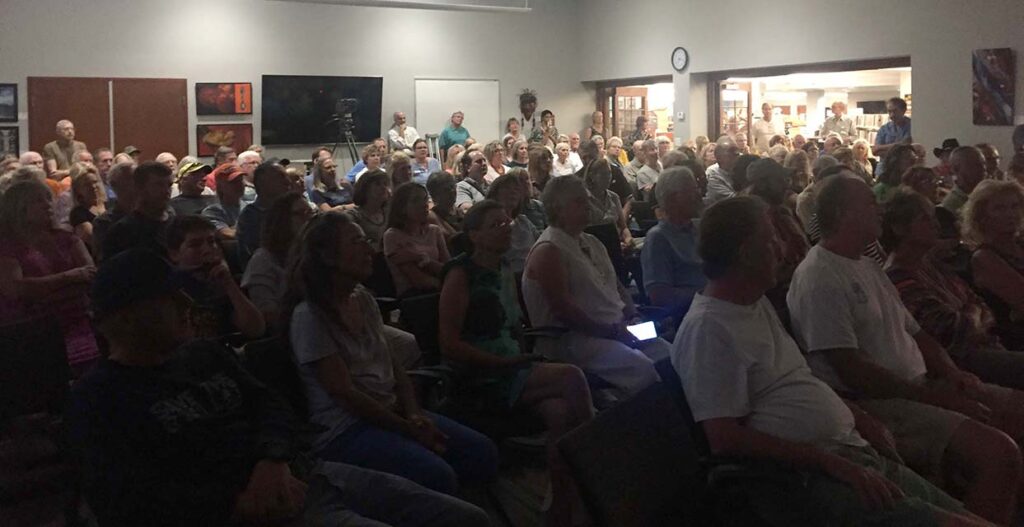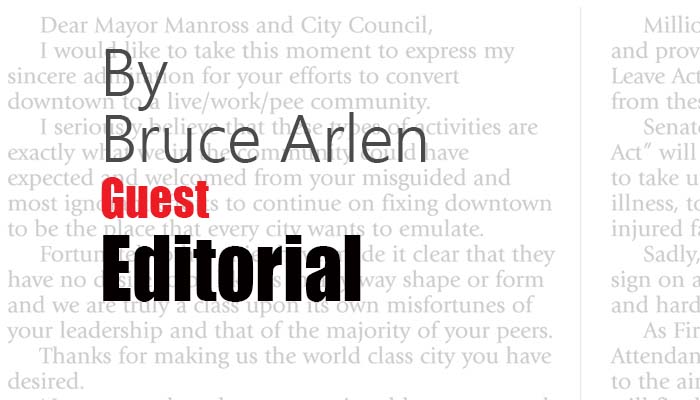During this summer’s heat, on July 22, close to 150 people attended the first Cave Creek Dark Sky Initiative (CCDS) event held at Desert Foothills Library. It was standing room only and I think it says a lot about pent up interest and curiosity concerning dark skies for Cave Creek, past, present and future.

Cave Creek pioneers and earlier officials, people like Martha Arnold, John Hoeppner, Cheri Hoeppner, Jacky Davis and Steve LaMar promoted a far-reaching vision for our lighting ordinance during the incorporation of our town and we are still benefiting from those efforts today. The seeds were planted back then. I have heard the following: “I thought Cave Creek was already a dark sky town.” Well, no we’re not a truly dark sky town… yet, although closer than many. This is good news. Even the last General Plan’s formulation included the phrase “Dark Sky” in the opening remarks and throughout the document. There is a desire for dark skies in Cave Creek.
At the library event the two speakers, both Ph.D. astronomers, were Dr. Jeffrey Hall, Director of Lowell Observatory, and Dr. John Barentine; Executive Director of Policy, International Dark Sky Association (IDA). Each gave very interesting and compelling information tying together the big picture with a ground level view.
Jeffrey Hall spoke about the Earth’s significant changing light-scape, which can be seen distinctly from space and emanates primarily from countless streetlights and other unshielded lights that when combined, produce a massive cumulative glow effect from multi-billions of lights. Cave Creek is on the very Northeast edge of one of the fastest growing and brightest concentrated lighting effects in this country. It’s presumed just in the Phoenix metropolitan area alone, there are some hundreds of millions of lights throwing off their glow. But turn to the north and east and the blackness of the Tonto National Forest beckons. We are living on the edge of darkness and lightness. This is a balancing act we can navigate when we become an IDA community.
John Barentine laid out how Cave Creek can mitigate this effect within our own town boundaries. The IDA doesn’t say we can stop the light invasion but we can protect ourselves by not contributing to the problem and by influencing other communities, just as Fountain Hills has been an inspiration to us. We can improve our current conditions despite the inevitable growth we’ve already seen and still continue to enjoy our way of life. We have the great advantage of being a uniquely dark place abutting Phoenix, so it’s a perfect time to apply for IDA Certification.
With an IDA certification comes benefits:
1. Enhances quality of life.
2. Upgrades lighting technologies and practices in our ordinance
3. Improves safety and visibility for drivers and pedestrians.
4. Reduces glare, which makes business signage more visible and legible.
5. Saves electricity and costs.
6. Boosts environmental compatibility with other environmental management plans.
7. Can contribute positively to enhanced property values, tapping into a growing property ownership market that prizes dark skies.
8. Attracts visitors from Arizona and around the world who seek out dark sky communities. (The Tonto National Monument has just been named an International Dark Sky Park.)
9. Finally, IDA Certification is an opportunity for a community to unite around a common goal supporting a shared identity.
We will be required to revise, add or delete certain existing lighting ordinance language to meet IDA standards. However, IDA will assist in this effort at no cost. We will be adopting proven lighting codes already written and embraced by every International Dark Sky Community including those right here in Arizona – Flagstaff, Sedona and Fountain Hills, among others, but written with our own particular Cave Creek identity.
IDA Certification is not an additional layer of government telling people what to do. We will freely resolve to become Dark Sky Certified. The first step is the requirement that Town hall leads the way by changing out their few buildings with new lighting technology over a period of five-years. It’s just not that hard.
We will still have a complaint driven enforcement system. Lighting changes will be made voluntarily over a ten-year period through normal light fixture attrition when old bulbs are changed out and replaced with newer bulb technology. Shielding of lights, already the law, should be implemented where needed. We will also see higher rates of voluntary compliance as the town becomes more aware of Dark Sky benefits.
Yes, to achieve an IDA Community Certification brings status. Dark Skies is a win-win for everyone… residents, businesses, visitors, Cave Creek and the State of Arizona. Let us join other Arizona towns and cities in the protection of our precious resource… the Dark Sky.
Bruce Arlen is Co-founder with Robert Hughes of the Cave Creek Dark Sky Initiative
[email protected]





